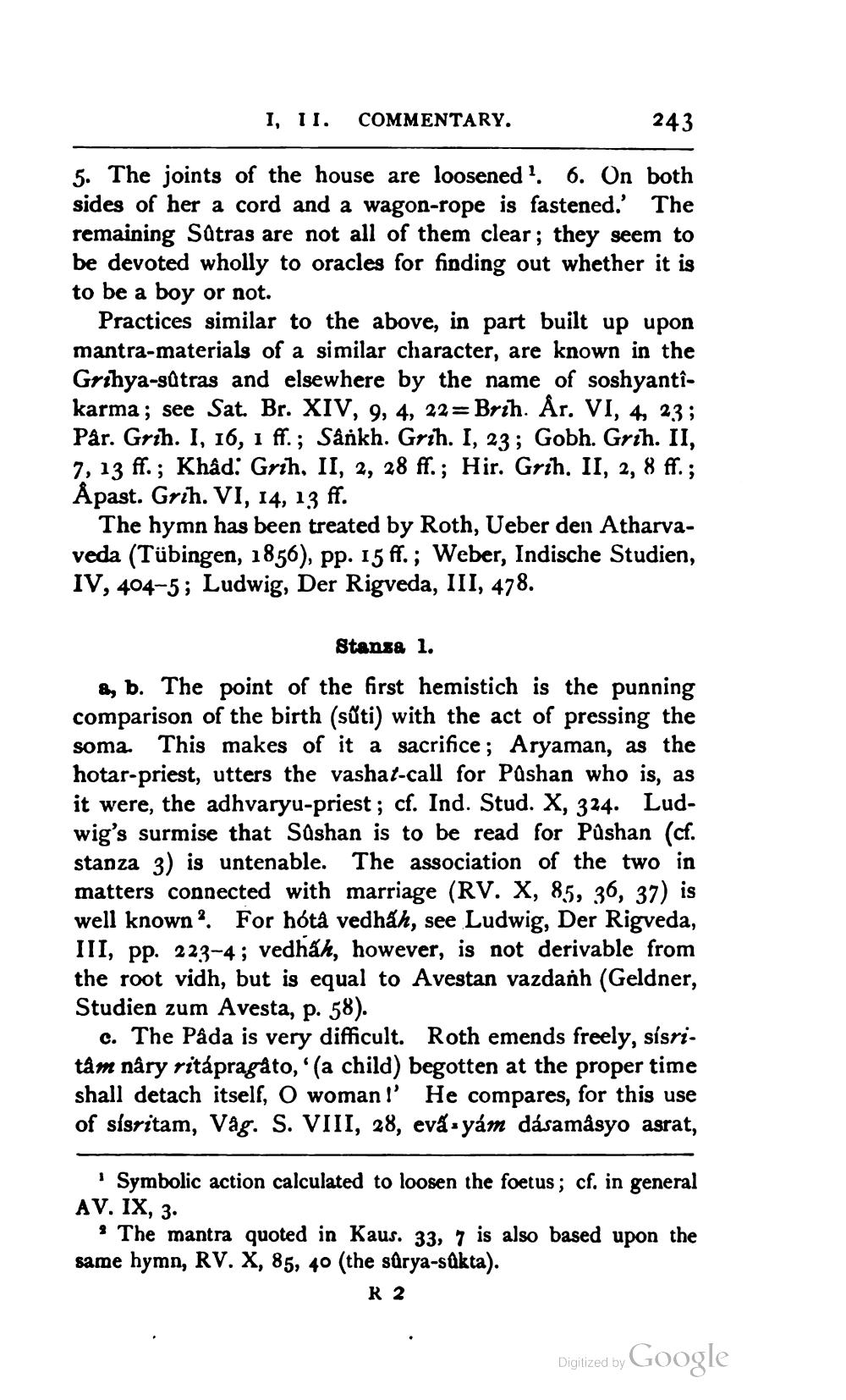________________
I, U. COMMENTARY.
243
5. The joints of the house are loosened?. 6. On both sides of her a cord and a wagon-rope is fastened. The remaining Satras are not all of them clear; they seem to be devoted wholly to oracles for finding out whether it is to be a boy or not.
Practices similar to the above, in part built up upon mantra-materials of a similar character, are known in the Grihya-sâ tras and elsewhere by the name of soshyantîkarma; see Sat. Br. XIV, 9, 4, 22=Brih. År. VI, 4, 23; Pår. Grih. I, 16, 1 ff.; Sankh. Grih. I, 23; Gobh. Grih. II, 7, 13 ff.; Khâd: Grih, II, 2, 28 ff.; Hir. Grih. II, 2, 8 ff.; Åpast. Grih. VI, 14, 13 ff.
The hymn has been treated by Roth, Ueber den Atharvaveda (Tübingen, 1856), pp. 15 ff.; Weber, Indische Studien, IV, 404-5; Ludwig, Der Rigveda, III, 478.
Stansa 1.
2, b. The point of the first hemistich is the punning comparison of the birth (sūti) with the act of pressing the soma. This makes of it a sacrifice; Aryaman, as the hotar-priest, utters the vashat-call for Pashan who is, as it were, the adhvaryu-priest; cf. Ind. Stud. X, 324. Ludwig's surmise that Soshan is to be read for Půshan (cf. stanza 3) is untenable. The association of the two in matters connected with marriage (RV. X, 85, 36, 37) is well known? For hótå vedhåh, see Ludwig, Der Rigveda, III, pp. 223-4; vedhák, however, is not derivable from the root vidh, but is equal to Avestan vazdanh (Geldner, Studien zum Avesta, p. 58).
c. The Påda is very difficult. Roth emends freely, sísri. tâm nâry ritápragåto,'(a child) begotten at the proper time shall detach itself, O woman!' He compares, for this use of sísritam, Våg. S. VIII, 28, evá-yám dásamåsyo asrat,
Symbolic action calculated to loosen the foetus ; cf. in general AV. IX, 3.
The mantra quoted in Kaus. 33, 7 is also based upon the same hymn, RV. X, 85, 40 (the sûrya-sūkta).
R 2
Digized by Google




